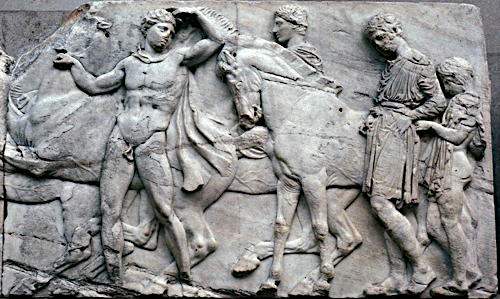Greek Sculpture: Monumental Greek Sculpture from the Age of Homer to the Time of Alexander the Great

A common Greek word for statue was "eikōn," from which the English word "icon" is derived, and the sculpted image enjoyed unusual power and prestige in Greek culture. This course will focus on monumental Greek sculpture from the age of Homer in the 8th c. BCE to the time of Alexander the Great 400 years later.
Statues served a wide range of functions in ancient Greece, as images of gods and goddesses, as personal dedications in sanctuaries, as grave monuments, and as honorific portraits. They were made out of a variety of materials, including terracotta, limestone and marble, bronze, and in rare cases, ivory and gold. In addition to free-standing statues, relief sculptures - in which the figures are not carved fully in the round but are attached to a background, like three-dimensional paintings - served many of the same functions, as well as providing opportunities for more complex narrative compositions. Free-standing statues and relief sculptures were combined in the figural decoration of temples, in which scenes of Greeks myths and legends supplied a kind of visual commentary on the purpose and meaning of the temple.
In addition to providing a chronological survey of the history of Greek sculpture, this course will investigate a wide range of related subjects, including Greek sculptural techniques, the significance of "realism" in Greek art, the analysis of stylistic change, and the relationships between art and society in ancient Greece. The course will conclude with an examination of the reception of Greek sculpture - its significance for later generations - from the Roman period to the present day.
Category for Concentration Distributions: D. Europe and the U.S., 1. Ancient